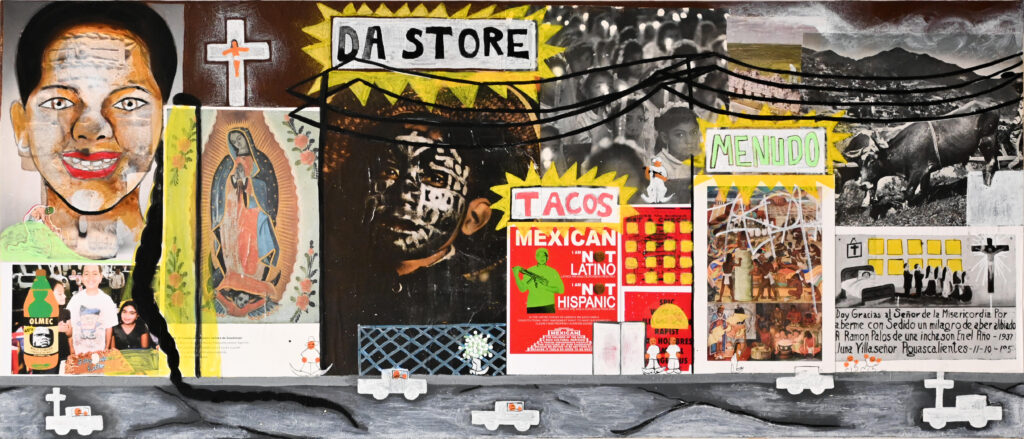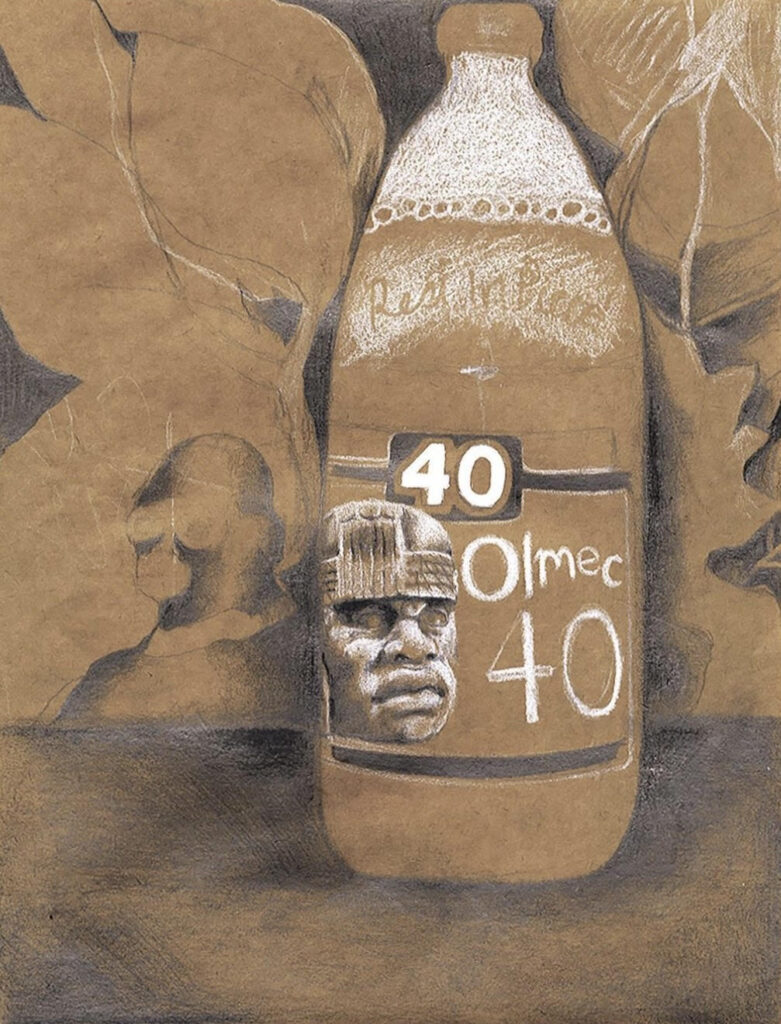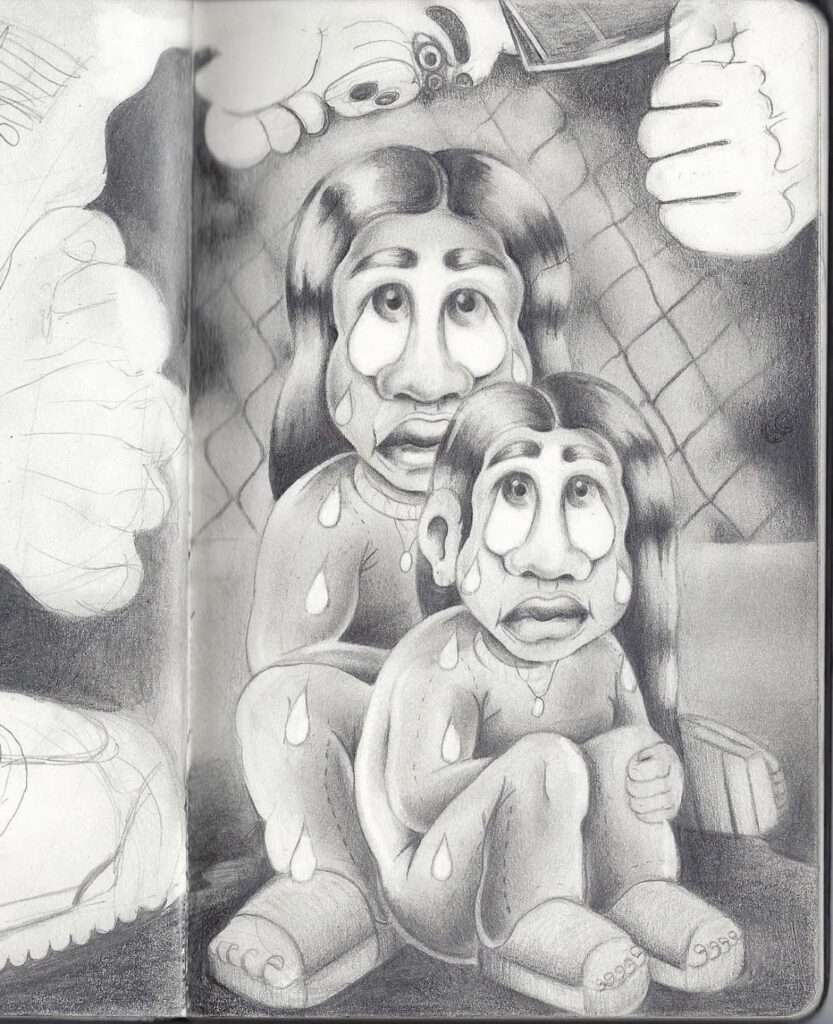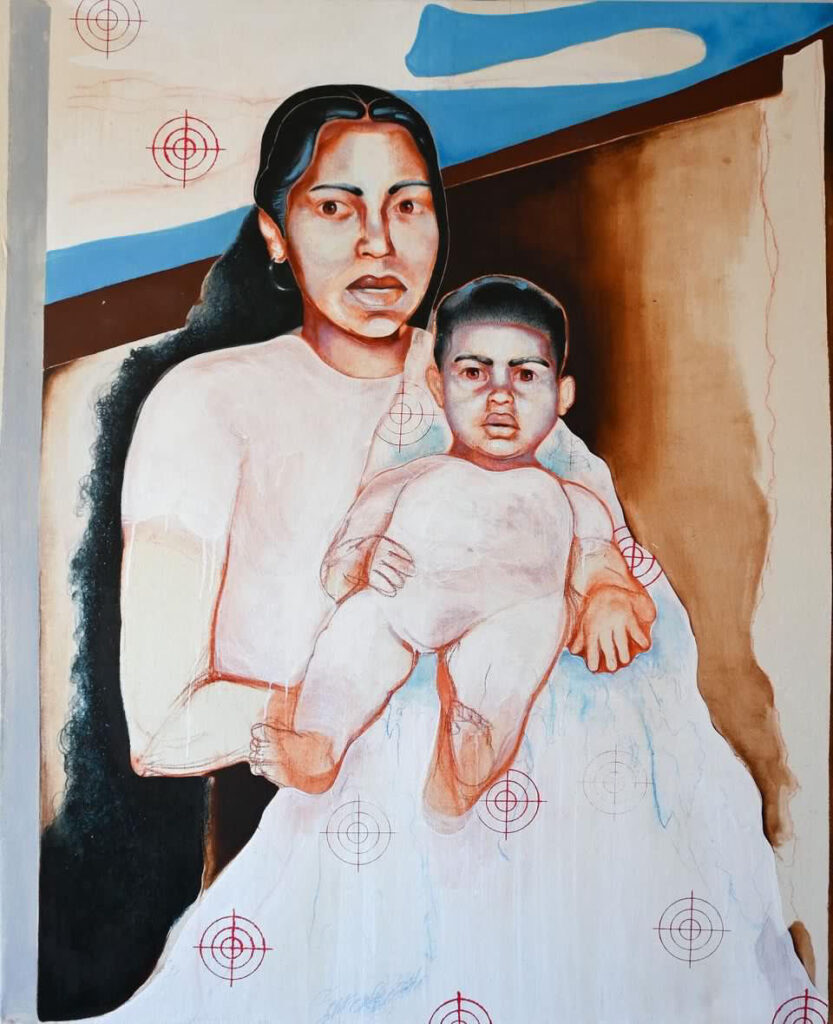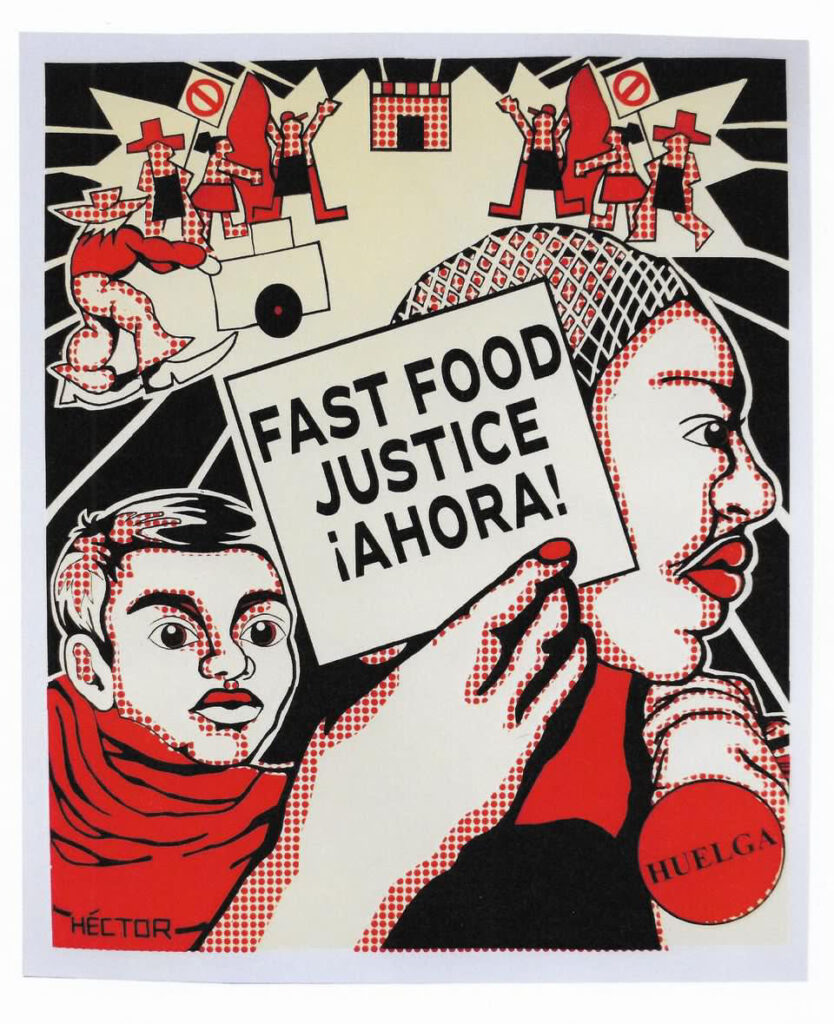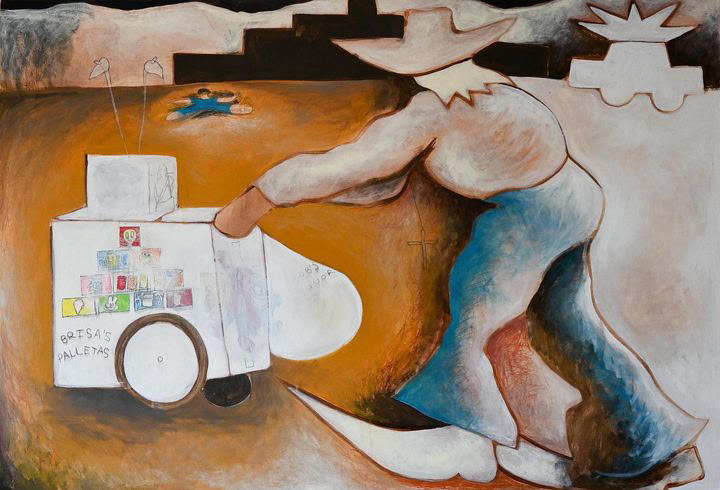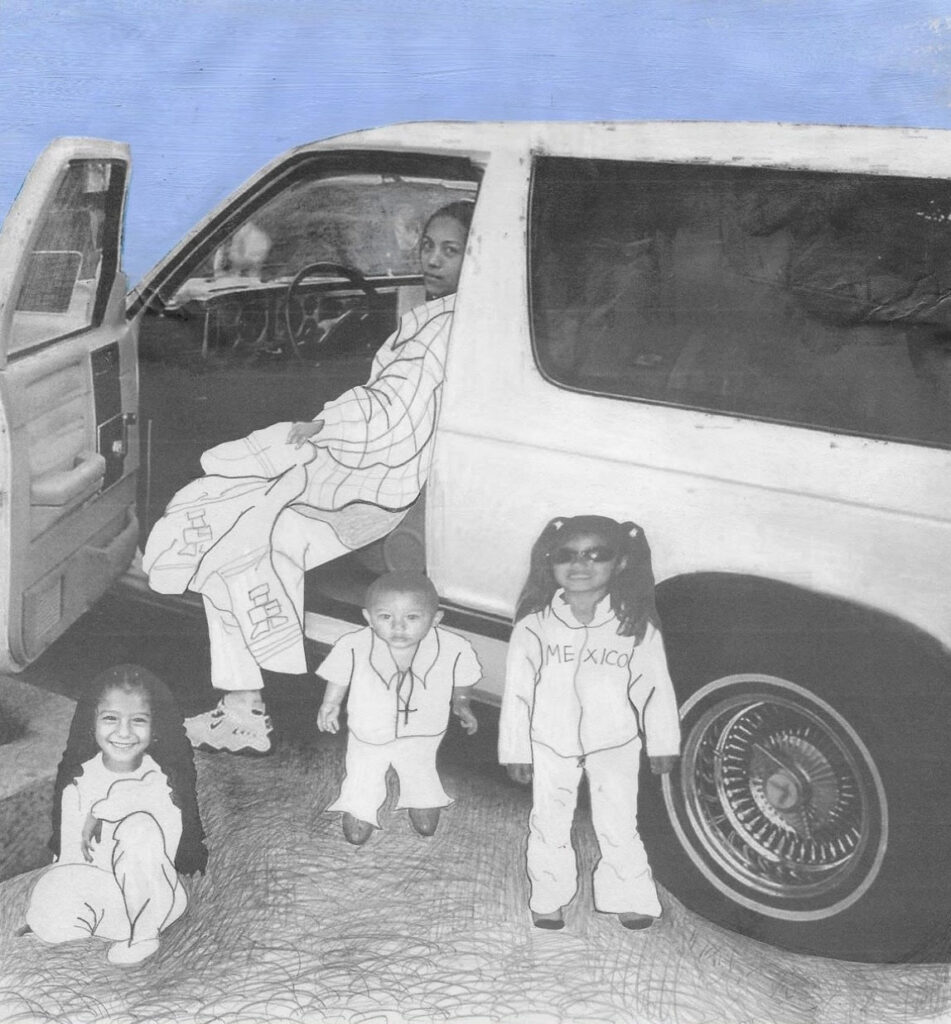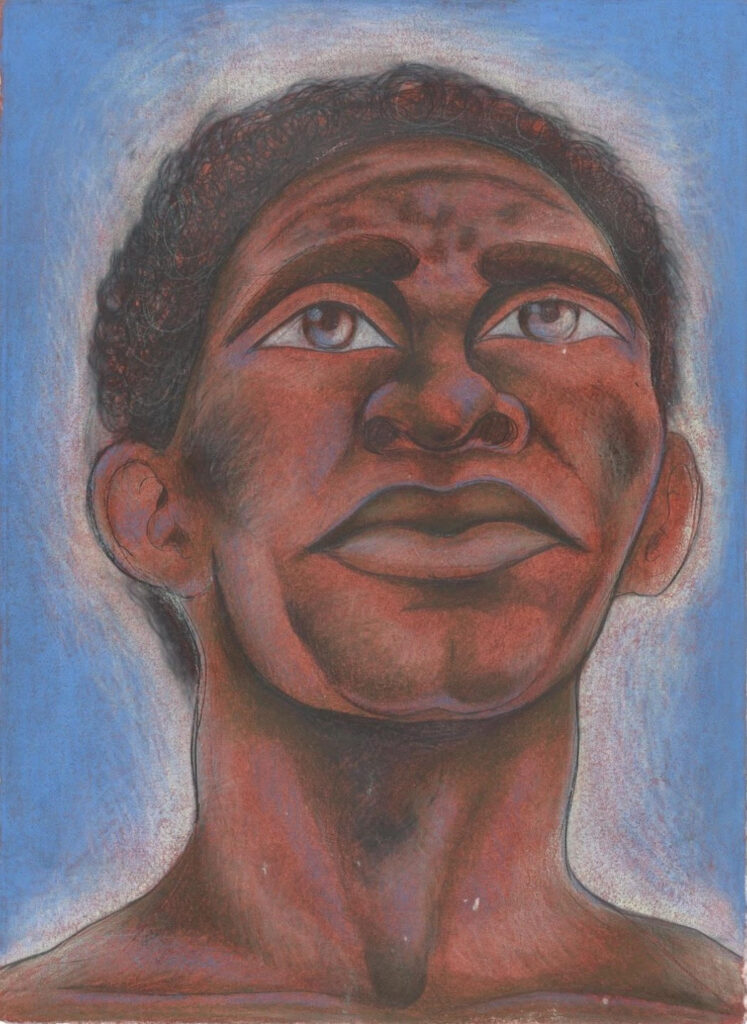Share this
Héctor Muñoz-Guzmán (b. 1999), Hector spent his foundation year at The Parsons School of Design and a year in The Rhode Island School of Design’s painting department. He was a finalist for the Tournesol Award at The Headlands Art Center and has received the Berkeley Individual Artist Grant. His work has been exhibited at Fall River MoCA, Bureau Gallery, Movimiento De Arte y Cultura Latino Americana (MACLA), Good Mother Studio, and Part 2 Gallery. He published an art book with Sming Sming Books. He works as an artist instructor for William E. Scott. He currently lives in Oakland, CA.
Héctor’s work has been published in Juxtapoz, 48 Hills, Mousse Magazine and Graphite Journal “POCKET” at the Hammer Museum.
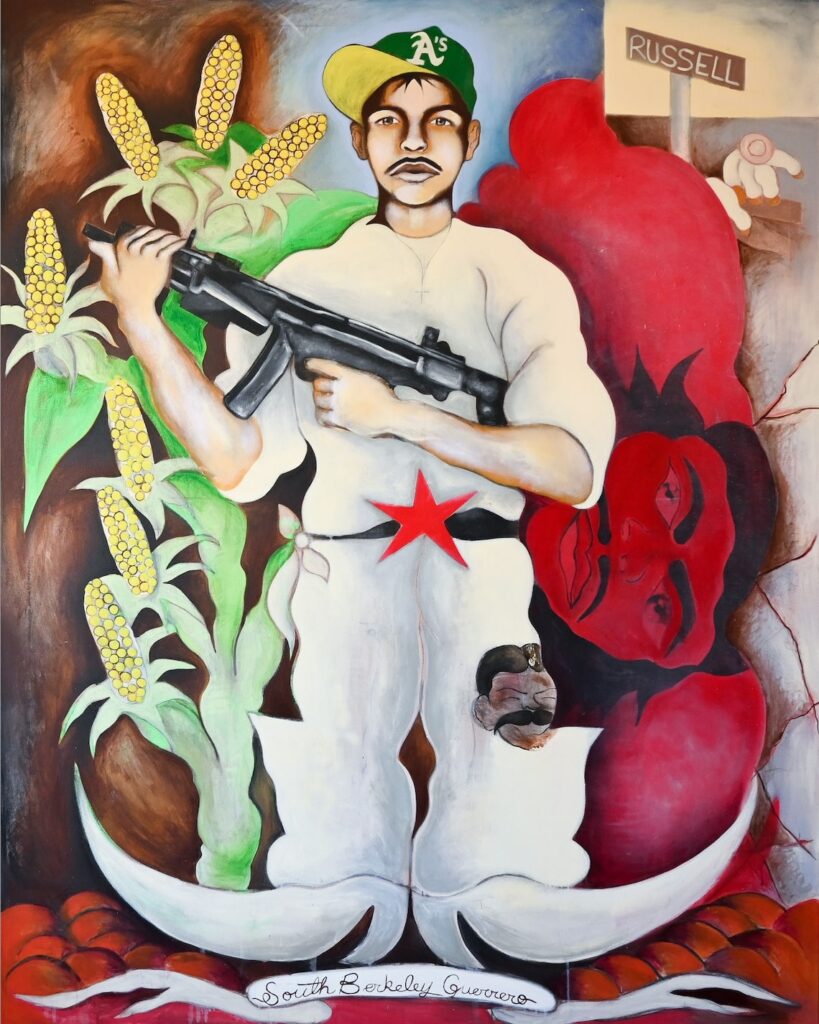
Hi Héctor! It’s a pleasure to sit down with you. First question that I always ask. How does a regular day look like for you in Oakland, California?
My weeks split up into two parts. I work closely with figurative painter William Scott at Creative Growth for most of the week. For those who do not know, CG is an art studio and gallery in Oakland representing 140+ artists with disabilities. My job consists of assisting in Scott’s everyday practice and supporting him in the studio. I feel highly honored to be a part of his process. It feels unreal that I am his art instructor. I am learning so much about the art world through him. He is genuinely the kindest man I have ever met.
Outside of work, I always make time to focus on my painting practice. Making art has become essential for me to survive, as much as my medication. A typical painting day starts in the morning. My art studio is my one-bedroom apartment. I am treating those painting sessions as a 9-5 job. Recently, I have been moving away from large-scale painting and focusing my energy on intimate collages. Returning to paper works has given me time to reflect on my life and help inspire my following big projects.
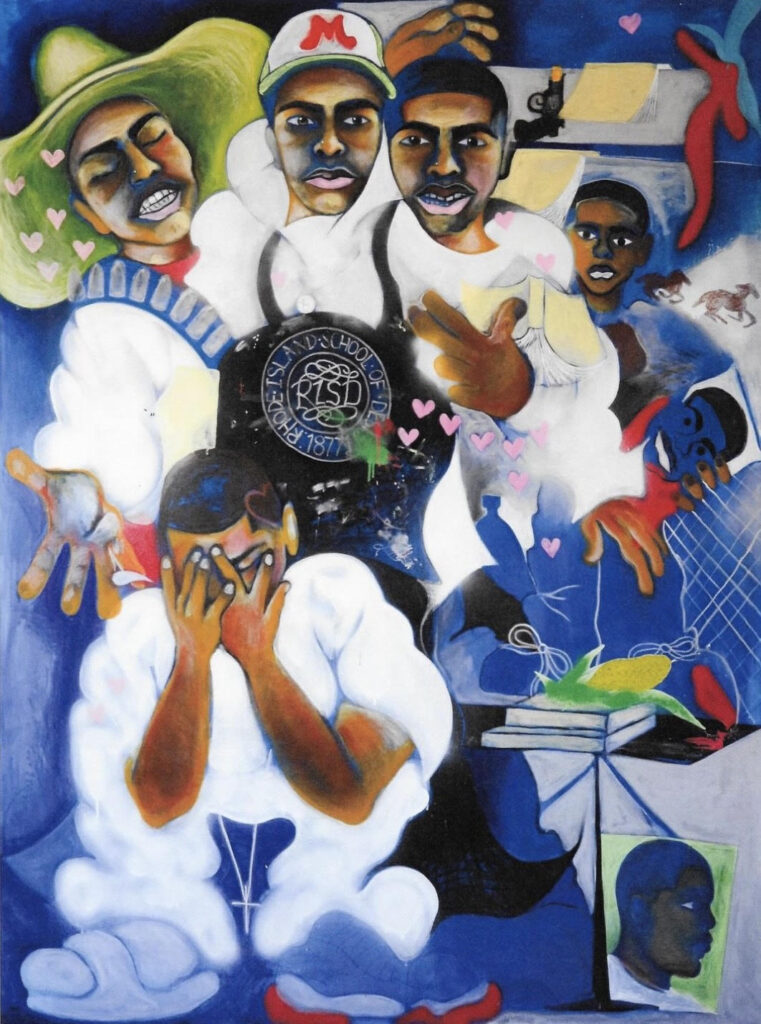
I’m curious. Growing up in the East Bay, what kind of kid were you, what did you enjoy doing and how did you spend your time?
As a child growing up in South Berkeley, I was fortunate to have a significant communal living experience. A large percentage of my family immigrated here from Tepatitlan, Mexico. I have fond memories of numerous family get-togethers. For the first 15 years, I lived with my mother and older sister in a one-bedroom apartment. We were all very close; those were some of the happiest times. I was shorter than all the other kids and very quiet. I was not the best at school and struggled to write and read in English because Spanish is my first language. I have always loved art, which has always been a creative outlet to manage my feelings. Making art has always been the only time I felt in control.
My father was an alcoholic and drug addict. When he was around, he would regularly abuse my mother in front of me. As a result, I would get in trouble for using inappropriate language in school and throw tantrums if my mother didn’t buy me a toy from the store. Memories of him were not just abusive. He would also draw and make wooden sculptures. I found myself wanting to copy his artistic style. He was the one that inspired me to start drawing in the first place.
Before I could legally get a job, I found multiple ways of making money. I would ride my scraper bike around the neighborhood and collect cans for profit, sell graffiti-style drawings to kids in middle school, and start screen printing t-shirts in high school.
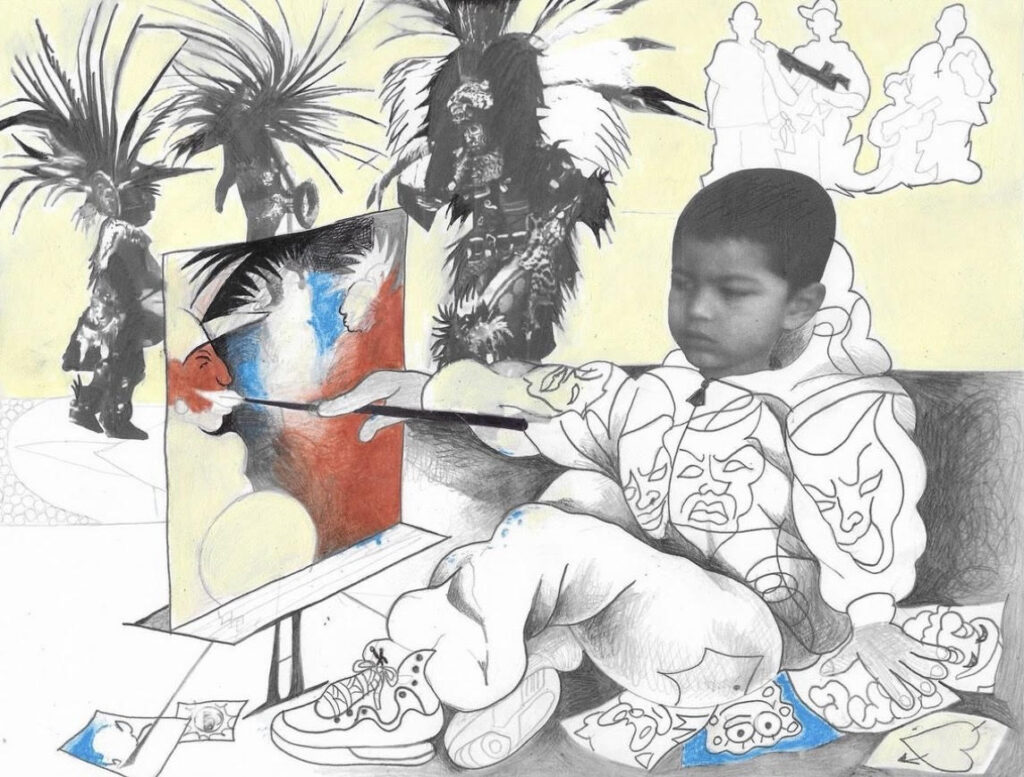
With that in mind. Can you talk to me about your time living in Mexico?
I returned to Mexico after my first manic episode. It was essential to my healing process. Leaving for college at 17 deprived me of feeling connected to my community. I realized at that moment that I took family connections for granted. I moved into my grandmother’s house. When settling in Tepatitlan, there was nothing to do but work and drink. Life seemed to feel more simple in Mexico at first. Having been deep into my depression, I could not comprehend a way out of it. I was then starting to mix my Bipolar medication (mood stabilizers and antipsychotics) with large amounts of alcohol daily. One of my family members went missing. Family members work long hours with little pay. A man down the street from where I lived launched himself under a moving trailer truck to successfully kill himself. I turned 21, and drinking was integrated into my daily routine. My two uncles were my best friends for that year. We would sit outside my grandma’s house after work, drinking 40s and tequila daily.
I had a big appetite, and my regular diet consisted of pork, tortillas, and coca cola. Not surprisingly enough, I gained 100 pounds since leaving school in 2019. I would work as an electrician assistant with my father, then later as a carpenter. I was making only a few dollars a week. At this point in my life, I wanted to settle here. Even if nobody around believed that I had any mood disorder, that concept was never talked about. I felt truly alone and misunderstood in this world. But at least I had a sense of community here.
In a positive turn of events, I was introduced to a new medication intake from a Mexican doctor. Upon my first visit, he immediately told me I was getting overly medicated in the United States. I felt that I needed reassurance from an actual doctor. He then slowly started to lower and lower my pill intake.
I was gradually transitioning out of my year-and-a-half depressive episode and creative block. I started creating digital artwork and doing commission work for clients in the States. I was also making drawings from supplies from the liquor store. Being able to create art again felt like a blessing. One of the many drawings produced in the Butler Hospital in 2019 ended up in a group exhibition at Fall River MoCa in Massachusetts. Simoustanly, starting to paint for a potential show in Los Angeles. Soon after, I discovered El Centro de Cultura: an arts center in the middle of Tepatitlan’s downtown. Getting taught by the local muralist Guadalupe Rios once reassured me of my path in art. Saying I had the spirit of a muralist. He was the first and only Mexican art professor I ever had.
Free thinking, creative and critical, Hector was back. I was no stranger to challenging authority and going against the grain again. Soon after, I started getting backlash and harsh criticism from family members for my drawings that openly critiqued Catholicism. Those ideas were rare and not acceptable in Tepatitlan or Mexico. Everyone unthinkingly followed Catholicism because that was tradition. Sadly none of them were privileged enough to learn the historical context of the Catholic church and its roots in colonialism and indigenous forced acclamation and erasure.
Before returning to Mexico, I hadn’t seen my father in 13 years. He was deported when I was in the 6th grade—my time in Tepatitlan ended with a heated argument with my father, a heavy alcoholic and meth attic. As a result of constantly questioning his authority, he threatened my life when I did not agree with him over one of my drawings. Instead of having an open dialogue, he threw a fit and kicked me out of his home (which was not even owned by him, it is owned by my grandma) in the middle of the night, claiming I could not disrespect the church. That drawing was unacceptable in his eyes, but going high and drunk to church was just fine. Seeing a dark-skinned Mexican man defend a white Jesus over his biological son baffles me. The same drawing he claimed I would be killed for was later shown at a group show at Bureau Gallery in New York City and sold at a collector in Chicago. Fearful for my life, I could not be in the same space as an unstable person who had a gun in his house and openly admitted to killing someone like it was nothing. I immediately packed my art supplies and prepared to walk for what felt like hours to my grandma’s house on the other side of town with my trusted dog Tupac walking by my side.
To this day, I still believe he was my spirit guide shielding me from harm. When I arrived, my father was in a van, and his girlfriend wanted me to go with them. He said nothing to me. Culturally the elder expects to forget the altercation without any resolution. I returned a few days later to pack my belongings, and he was still enraged. The last memory I have of him was him coming out of his house, yelling at me, saying never to ask him for anything again. Like he ever did anything positive to nurture my life in the first place. Then he left to buy meth. Throughout the days following the incident, instead of wanting to talk to me, he called everyone from the family to tell his side of the story to validate that his actions were justified. He was more worried about what people thought of him than actually fixing the situation. After that series of events, my mother bought me a plane ticket, and I returned to The Bay Area.
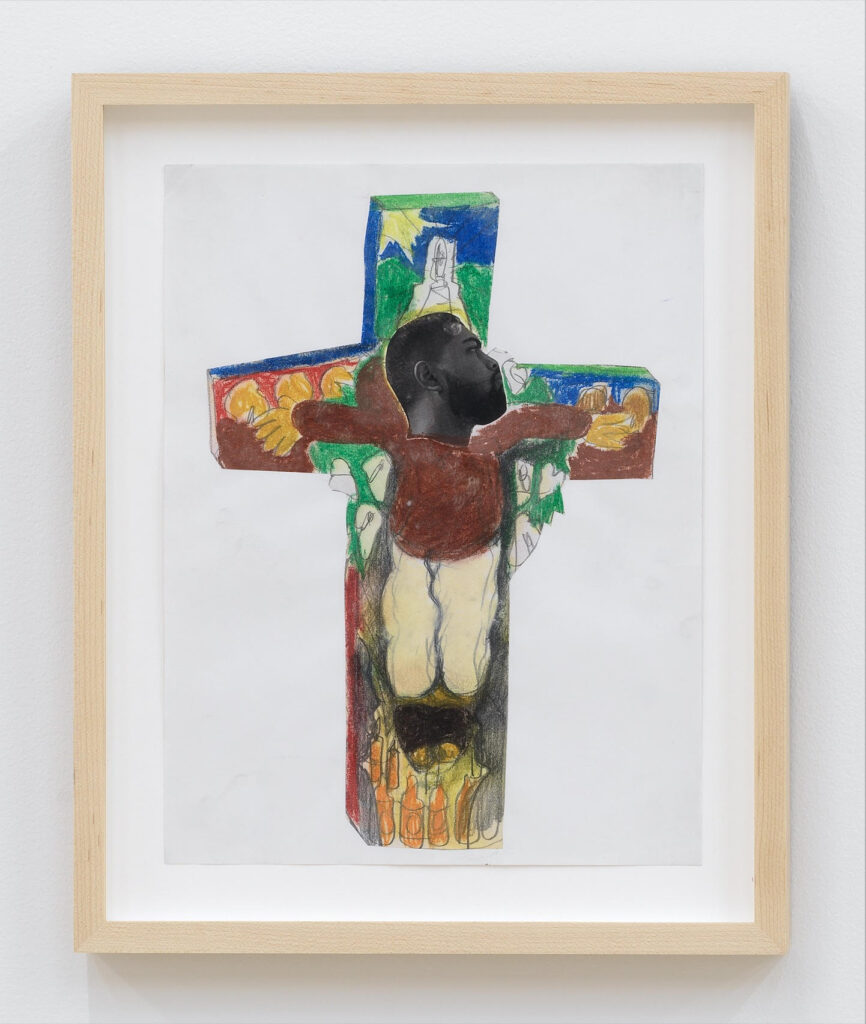
I know your mother, Brisa, is one of your biggest inspirations. She came to America when she was just 14-years-old. Can you tell me a little bit about her, and how she has molded and influenced you into the man you are today?
My mother, Brisa, has always had the biggest heart of anyone I have ever met. She’s been through so much in her life but has always firmly believed that where you come from does not determine where you will end up. She is lovely and caring. She makes the best homemade Mexican food and has always dreamed of opening her Mexican restaurant.
I am fortunate to have her as my mother. Even if people would judge her, she would never talk down on them. She raised me with values to care for others, treat everyone with respect, and hold the space in touch with my emotions. My mama would always work restaurant jobs to keep a roof over our heads while offering me and my older sister a safe space to grow and be ourselves. There was always an abundance of love. Raising her children has always been her main priority.
I haven’t seen my mom in 3 years. For my whole life, she has put me over her. She always supported me even if she did not fully understand the career path I wanted as an artist. Now that I am on my own, I hope she finds the time to care for herself and find her true purpose outside of being a mother. She will forever be my superhero.
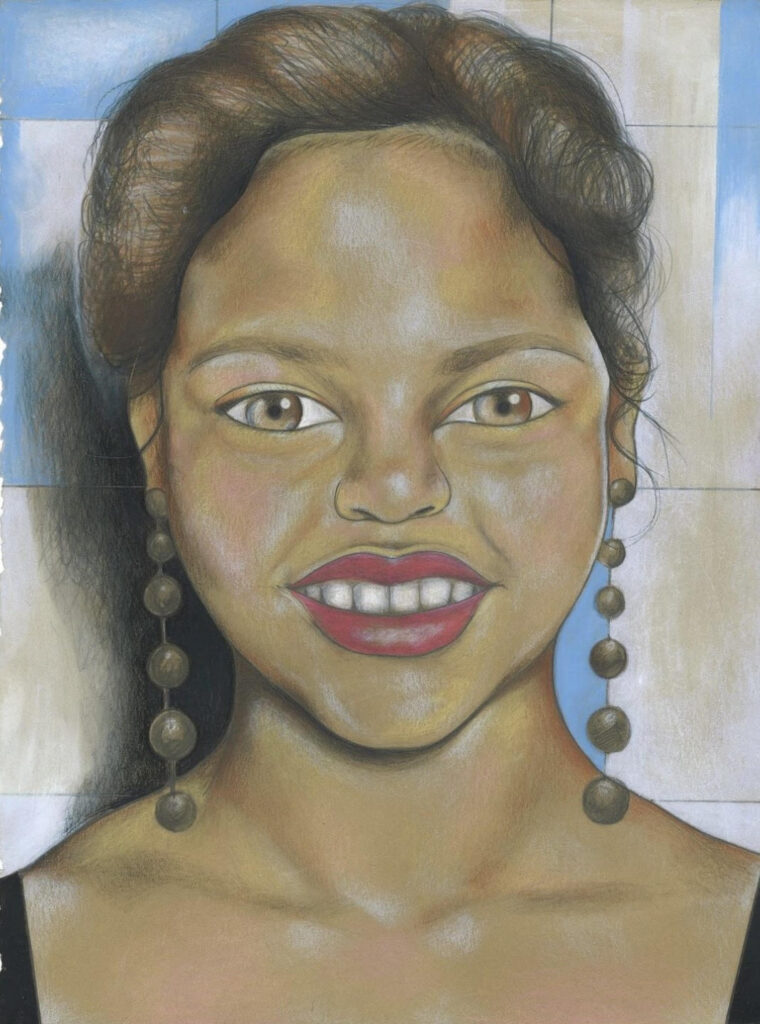
When you’re 17, you enroll in Parsons School of Design, in New York City. What was that experience like?
It was my first time flying in a plane in 15 years. Only having 40 dollars in cash when arriving in New York. I did not have enough for an Uber, so I took the train from the airport with two pieces of luggage, a backpack, a skateboard, and a duffle bag. Arriving at my dorm drenched in sweat. I wish my parents had dropped me off like everyone else.
The first year of art school was the foundation year. I was focusing on drawing, sculpture, video, and sustainable fashion courses. I did well academically but struggled to buy art supplies for my projects and food. I worked part-time at American Eagle Studios as a stock associate. I was in rooms with students that were extremely well off—feeling out of place at times. It was the first time I was exposed to significant museums. We would take field trips to the New York MoMA, the Met Museum, and the Brooklyn Museum. Parsons was a great school, but I did not feel like I was being challenged for what the school was costing me.
I was seeing someone at the time who went to the Rhode Island School of Design, and I would visit her every month. I grew very fond of the driven atmosphere the students had. My drawing professor at Parsons went to RISD and later wrote me a letter of recommendation. I applied and got in with a scholarship to their Illustration department.
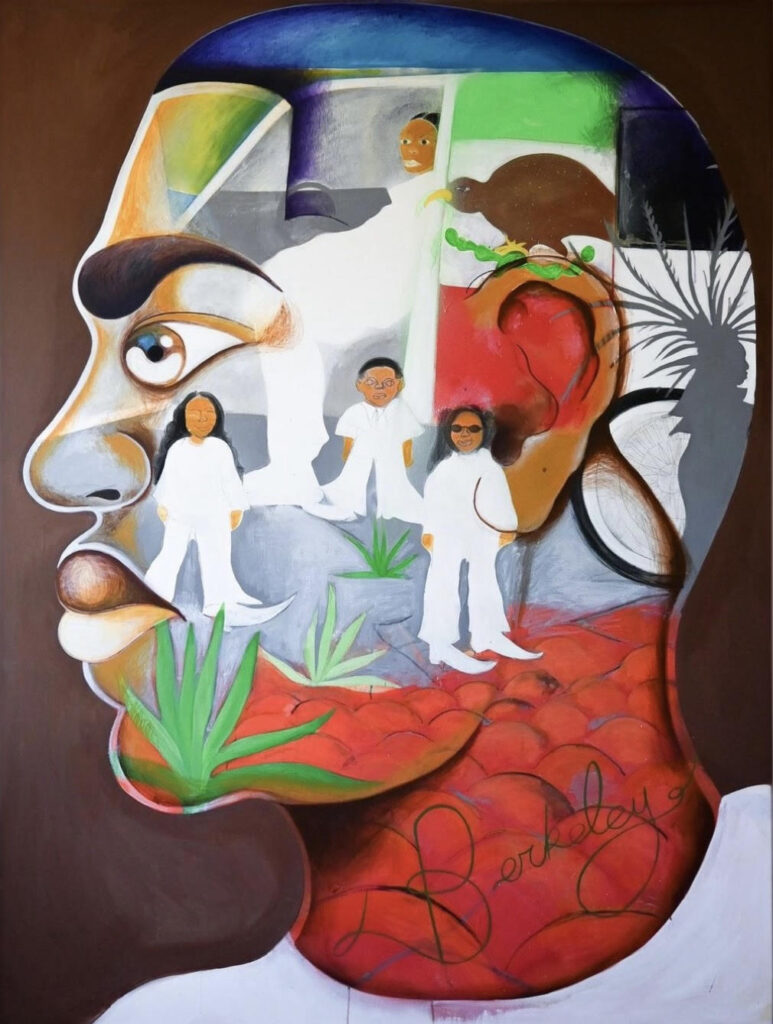
Alright, so when did you start to paint, and when did you start taking being an artist seriously?
I started painting during my senior year of high school. The year before that, I solely focused on digital artwork. My art teacher Ms. D’Adamo convinced me to start painting. I loved it immediately. That year, I created a portfolio that got me into the Parsons School of Design.
Once I landed in New York, I knew I would consistently work hard to achieve my dream of becoming a successful artist. Since then, art and art making have been the focal point of my life.
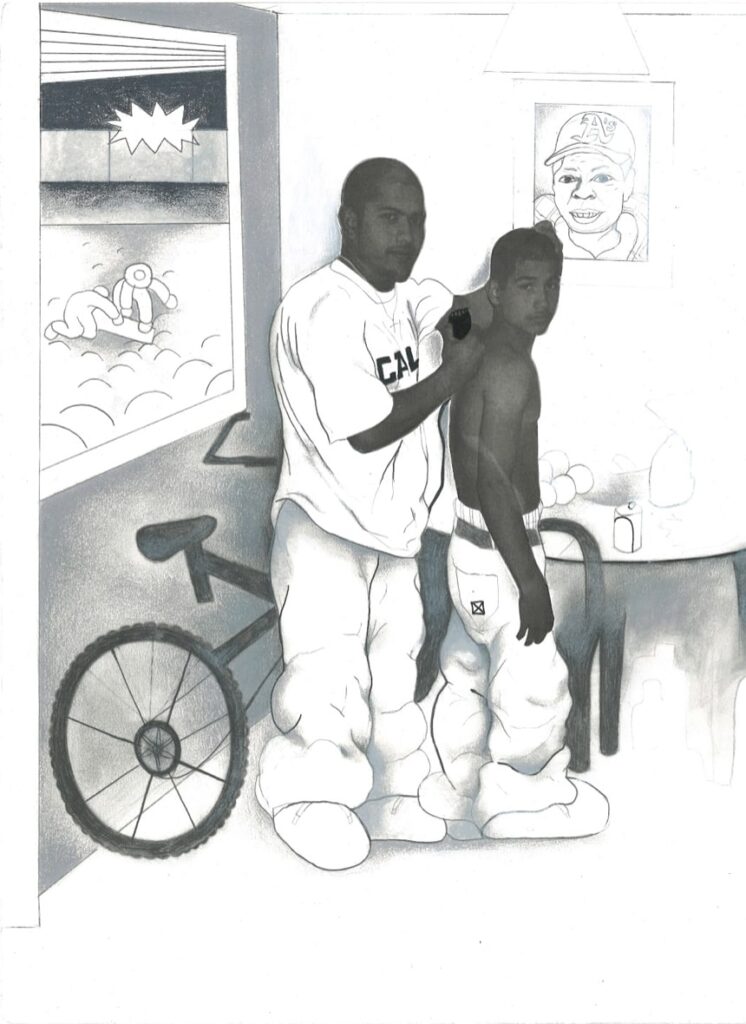
I’m curious about your overall relationship between you and your art. Talk to me about that.
My art is an extension of myself: an outlet to comprehend the happiest and the darkest moments of my mind. The process feels like a never-ending investigation of myself, my family, and my cultural history. The way I understand the world is through art making.
It helps me feel connected with my family. As a colonized person, much of my history has been lost. I want to preserve my culture, traditions, and individuality through this art process.

Let’s talk about your art now. The various scenes in your work. Are they something you have experienced ? Or how do you come up with them?
The scenes in my paintings are a pool of memories from my personal experiences, stories that elders told me, Mexican history, and my hopes for the future. I never reference one place, period, or idea in one artwork. I take a little something from all parts of my brain and create a depiction from all my thoughts. Everything I have experienced, my ancestors, and my culture are intertwined. We’re all connected. I show that all on one canvas.
Ideas just come to me sporadically. I do not overthink the whole process and let my self-consciousness drive the piece’s creation. While painting, I do not need to think of the colors I want to use. I go for it without thinking.
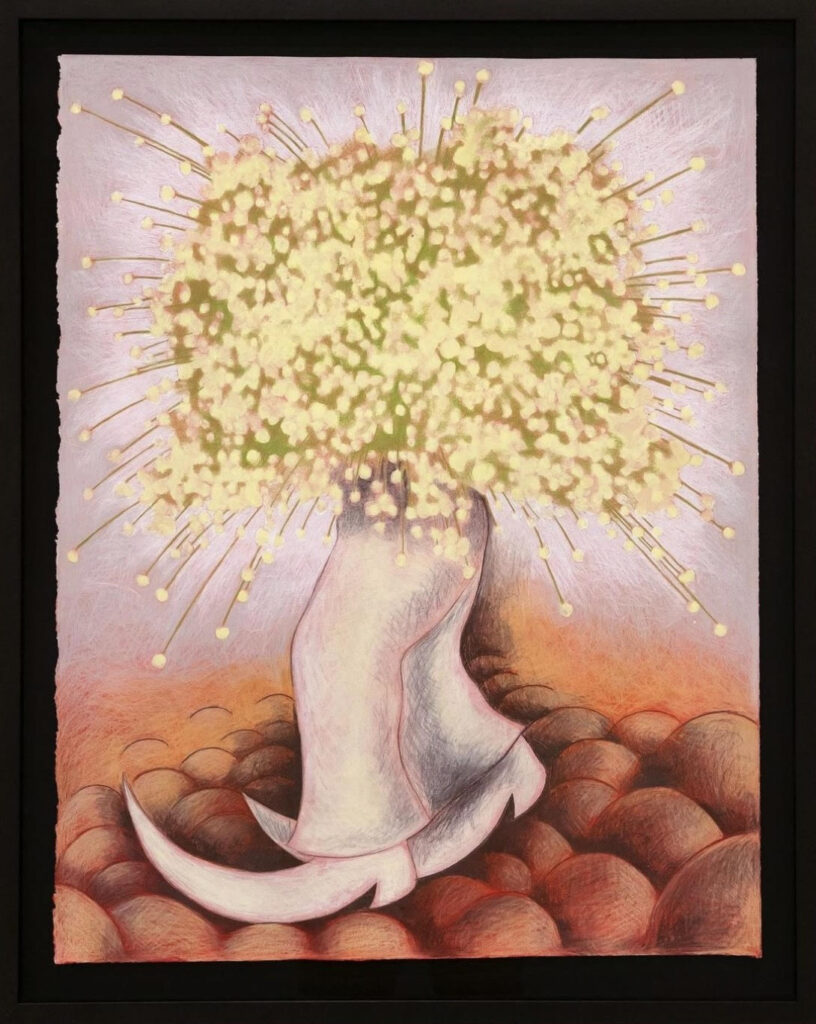
With that in mind. Who are the various people in your works?
My work depicts myself conversing with family members, culture, and history. I frequently paint my mother, older sister, younger brother, and girlfriend. I started representing my uncles as well. Some people would rather stay anonymous. Bodies of working-class men, in the form of a Paletero man or a flower salesman, make multiple appearances in my work. Mexican historical figures and Mesoamerican statues are also in the mix. Mostly, it’s a collection of personal, cultural, and historical life infused into one canvas.
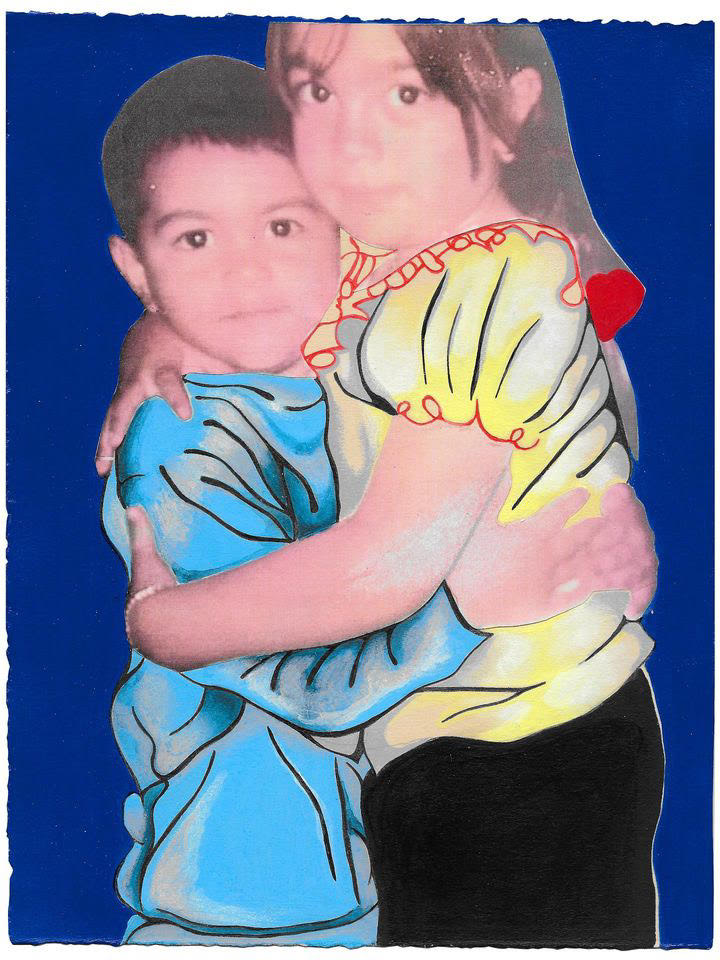
I know you’ve already talked about this topic, but can you try to elaborate it a little bit? Mexican culture is heavily represented in your work. Can you tell me a little bit about that? And what are you hoping to convey?
That’s my culture. I either resented or didn’t embrace it for most of my life. Growing up in a capitalist society favoring whiteness, I wanted to be accepted. I was the first son in my family to be born in the United States. I spoke English in school, but my family was all Spanish.
Constantly distancing myself from my people the further I arose the art latter. 19 was the age I figured out my place in the art world. From there, I wanted to use my voice to gracefully depict people historically overlooked in the modern art world: the working class, family, and myself. I want to honor, preserve and keep traditions alive. All while embracing the culture I came from.

I know you’ve already mentioned this as well Héctor, but can you try and tell me a little bit more about your bipolar disorder. How has it impacted your art? And how has it affected your everyday life?
I was diagnosed with Bipolar 1 at 19 while attending Rhode Island School of Design. My symptoms worried my friends around me. It resulted in spending a month and a half in the mental hospital. My first manic episode quickly transitioned to a depressive episode and art block that lasted a year and a half. That was the only time in my life when I wasn’t actively making art and the lowest point. I could get off most of the medication the doctors were prescribing me. Taking very low doses now has me feeling like my old self again.
It’s also a blessing to disguise. Being able to channel my most profound sadness and happiest thoughts regularly has resulted in constantly having ideas I want to explore in my art.
I’m stable now, for sure. But I always have in the back of my mind that I could end up in the hospital again. I don’t drink anymore, and that’s for the best. Drinking makes my symptoms worse. I try to tell myself that my emotions will pass and try my best not to spiral in any direction.
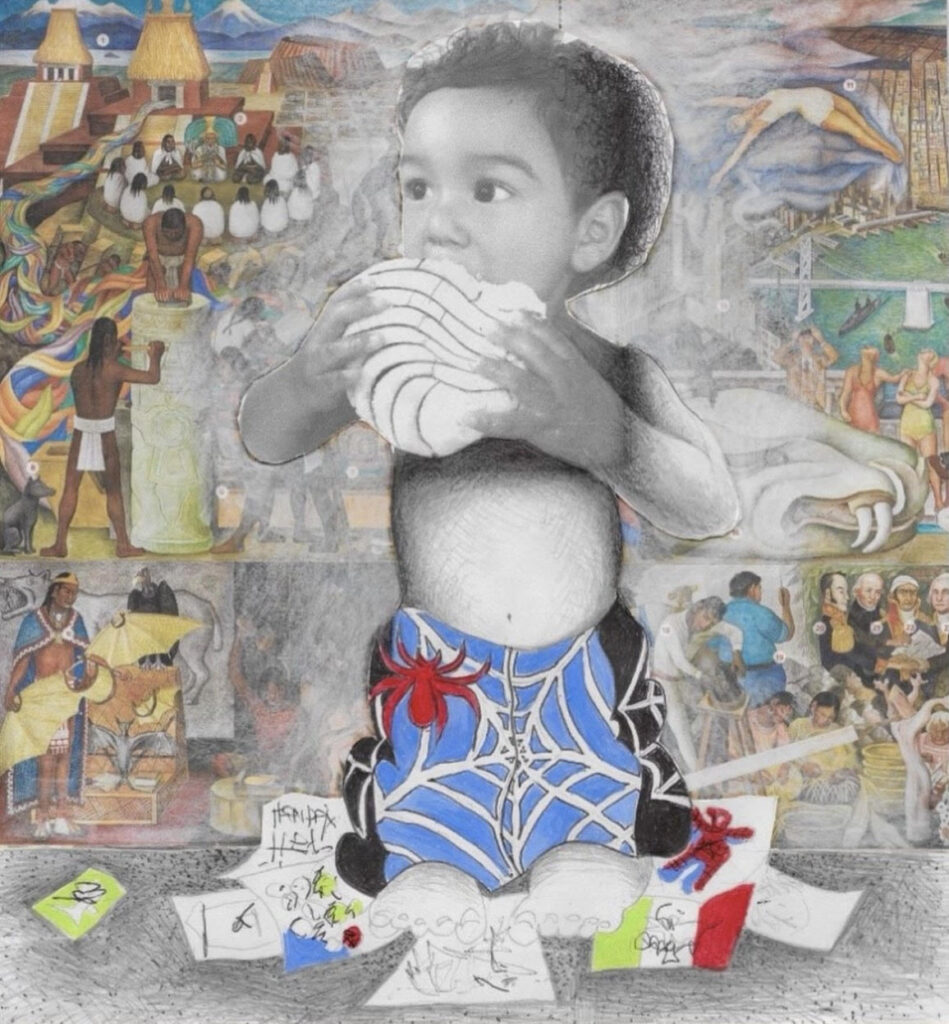
Can you tell me about your use of symbolism?
I find myself recycling a lot of the same imagery repeatedly.
Can you walk me through your creative process? From beginning to end?
As I mentioned before, my ideas come to me sporadically. A lot of the time, it starts with a reference photo, typically an old family photo. From there, a concept appears in my head. I get all the essential information and values from a small collage. The collage gives me a great reference point to paint from. When painting the composition, I feel like I am filling in shapes. It’s mindless. I do not measure anything out or use a projector. I have never been worried about getting the proportions entirely right. Through my creative process, I have learned to trust my intuitions, embrace my mistakes and let my self-conscious drive.
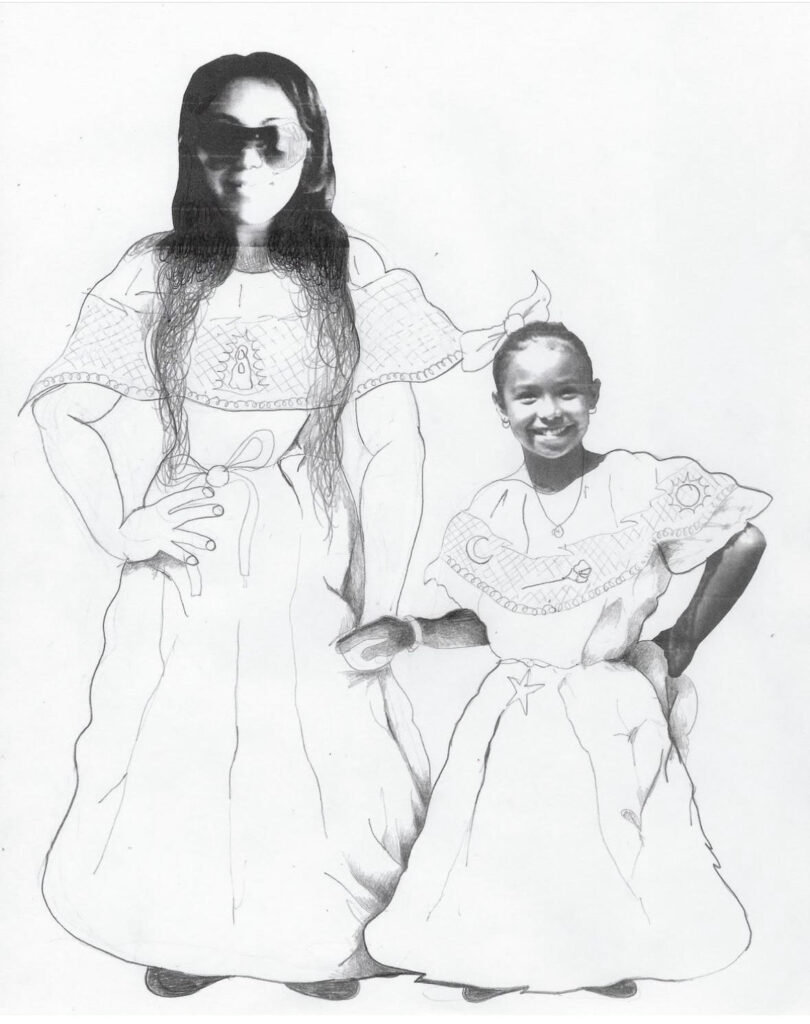
With that in mind. Do you have any specific painting techniques?
When painting, I always start with a mid-tone or a bright color. I never begin an image on a white canvas. Gessoing the canvas a minimum of 6 times, sanding and wet sanding between layers to create a smooth surface. Starting with a loose chalk drawing, then color blocking with spray paint. I don’t ever mix my colors. I layer them. I am focusing on one color at a time to handle all my color choices. Most of the painting is acrylic and chalk, but I use oil paints when it’s time to paint a figure’s face or skin. The oil makes the face the softest part of the painting.
How do you approach color?
I love to color straight out of the tube. Saturated and bright colors are a big part of my culture. I have often been told that I should tone down my color palette. When approaching color, I always take it one step at a time to stay calm. Challenging myself one day to create paintings using a limited palette of one to three colors would be interesting.
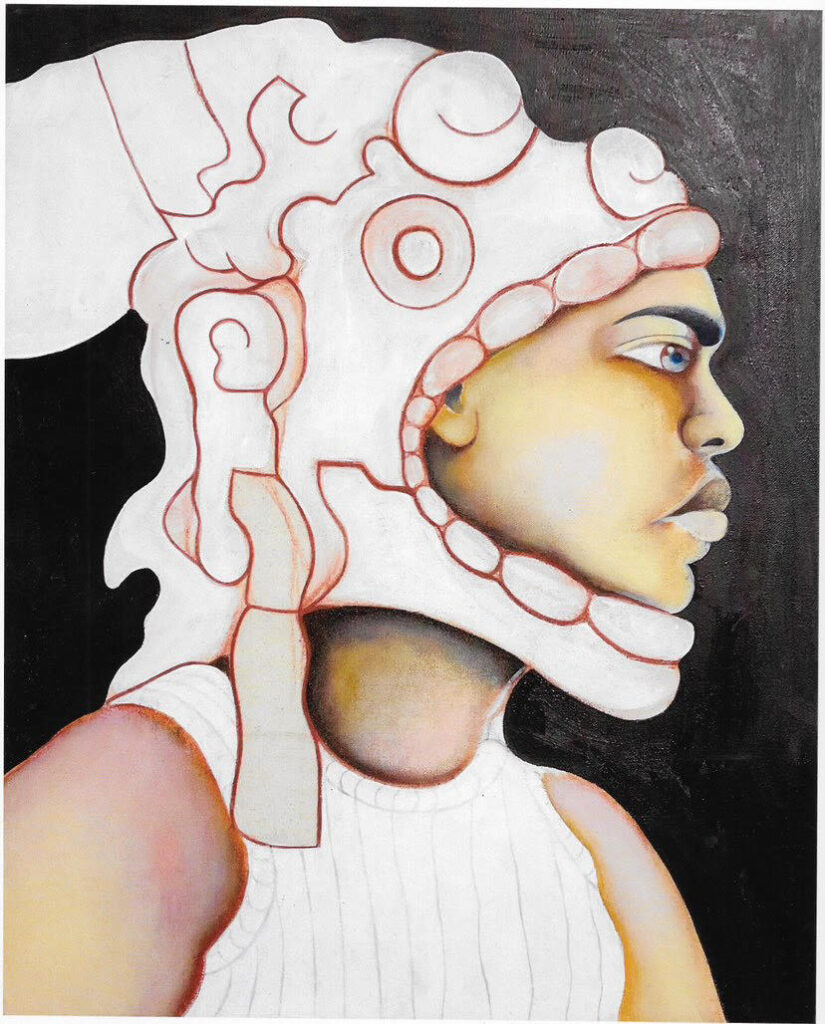
I know that you just released your first book. Can you talk to me a little bit about that? What’s it about? And what made you want to write a book?
“Brown Eyes From Russell Street“, is the title of the artist’s book. Referencing the street in South Berkeley I grew up in. It was designed and curated by Vivian Sming and published by Sming Sming Books. The book thematically groups 99+ selected paintings, collages, and drawings from 2018 through 2023. Artist photographs from Amelia Berumen and Maya Faith Chan, foreword by Vivian Sming, interviews with Pachi Muruchu, South Berkeley Guerrero, and texts from myself.
Vivian has been fantastic to work with. They involved me in every step of the process. We would have periodic check-ins to view all the different drafts. During the design process, Viviann always considered my ideas. They sent me the first proof of the book. They set up an artist talk during the San Francisco Art Book Fair and sold the book at the La Art Book Fair. They do all the business side, which I appreciate.
The book has been my biggest project to date. It took about six months to complete. Creating a book is a fantastic opportunity to make my work accessible to the community. I have yet to have the opportunity to show most of the work publicly. I envisioned the book as an exhibition on paper and wanted people to see my artwork as a body of work, not as individual pieces. The forward and interviews give a first-hand glimpse into my thought process and significant life events. I hope that viewing everything together shows people that my artwork and life are intertwined.
VIVIANS WORDS (thought it would be important to add)
Inspired by his family, culture, and history, Héctor Muñoz-Guzmán depicts moments from his life experiences as recurring elements, alongside Mesoamerican imagery, Mexican icons, and the different environments he’s lived in. Brown Eyes from Russell Street traces Héctor Muñoz-Guzmán’s artistic practice during a transformative and critical period in his life—contending with isolation, mental health struggles, hospitalization, and alcoholism. The book doesn’t follow a strictly chronological path. It groups themes and time periods in Muñoz-Guzmán’s work, weaving together ideas, memories, thoughts that provide continual sources of reflection. It captures the range of his life experiences—growing up in South Berkeley, attending RISD, being diagnosed with bipolar, working in the agave fields of Tepatitlán, and staying connected to family. Whether the subject is community, depression, or agrarian life, Muñoz-Guzmán treats them with the same attention, care, and grace, recognizing that all of these people, places, and states of mind inform who he is as a person today. The past, present, and future are one.
– By Vivian Sming
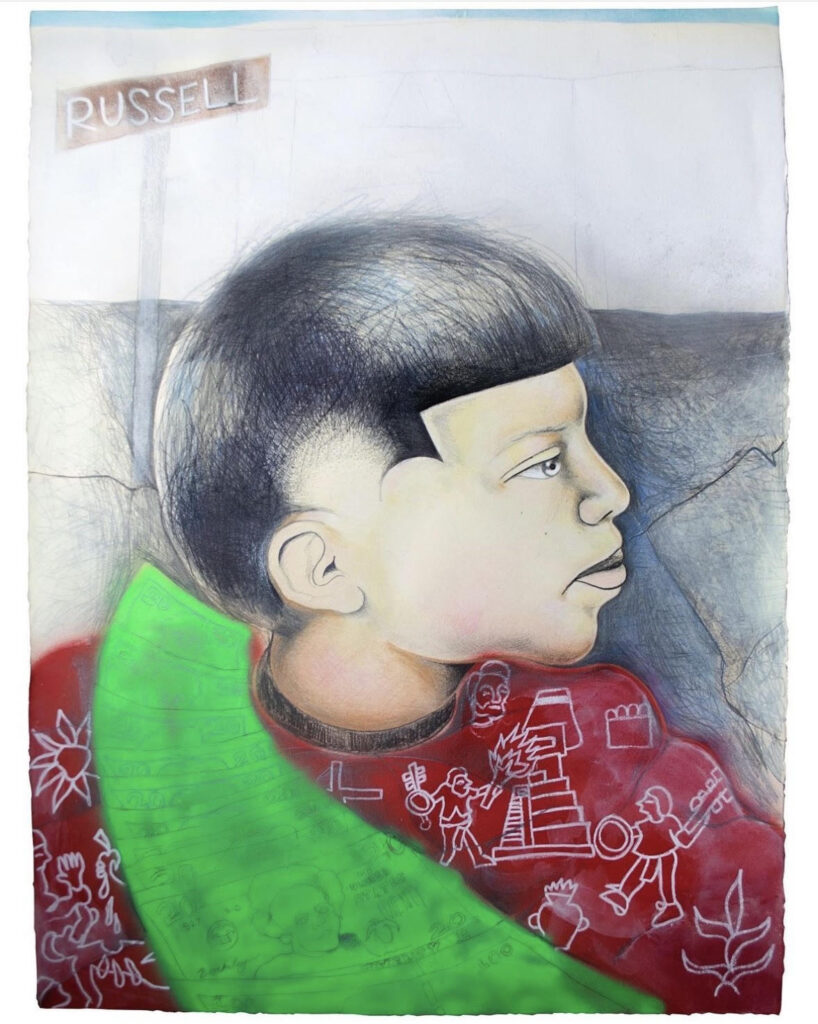
How do you deal with creative blocks and depression?
I try to remind myself to enjoy life. That’s where inspiration from art comes from. I’m also a son, a brother, and a boyfriend outside of being an artist. I can’t be tucked in the studio 24/7 and not experience the outside world. For a creative person, finding balance in making work, sharing life, and reflecting is essential.
Depression is a part of my diagnosis. I try my best not to let it consume me. I reassure myself that these feelings will pass and constantly remind myself of all the blessings I have in life. There are more aspects of my life to be happy about than sad.

How do you deal with rejection? Or when a project doesn’t go through?
I don’t open up about this a lot. But throughout my short career as an artist, I have experienced a lot of rejection. Having applied to numerous gallery and museum open calls in the Bay Area and have been rejected from all of them. I have only shown my paintings in the Bay Area once. I was even a finalist for the Tournesol Award at the Headlands but sadly did not get chosen as the winner. There have been many studio visits from galleries that have yet to lead to anything. Been offered countless solo exhibitions, but none of them came to be.
I’m hard on myself at first. But try to remind myself that I’m only 23 years old and have so much growing to do as an artist. Luckily, I have been invited to gallery shows and successfully shown work, published a book, taught art classes, and won various grants. The accomplishments throughout my career thus far are not taken for granted. I am also extremely grateful for everything. An opportunity will come when more of my work is shown to the public.
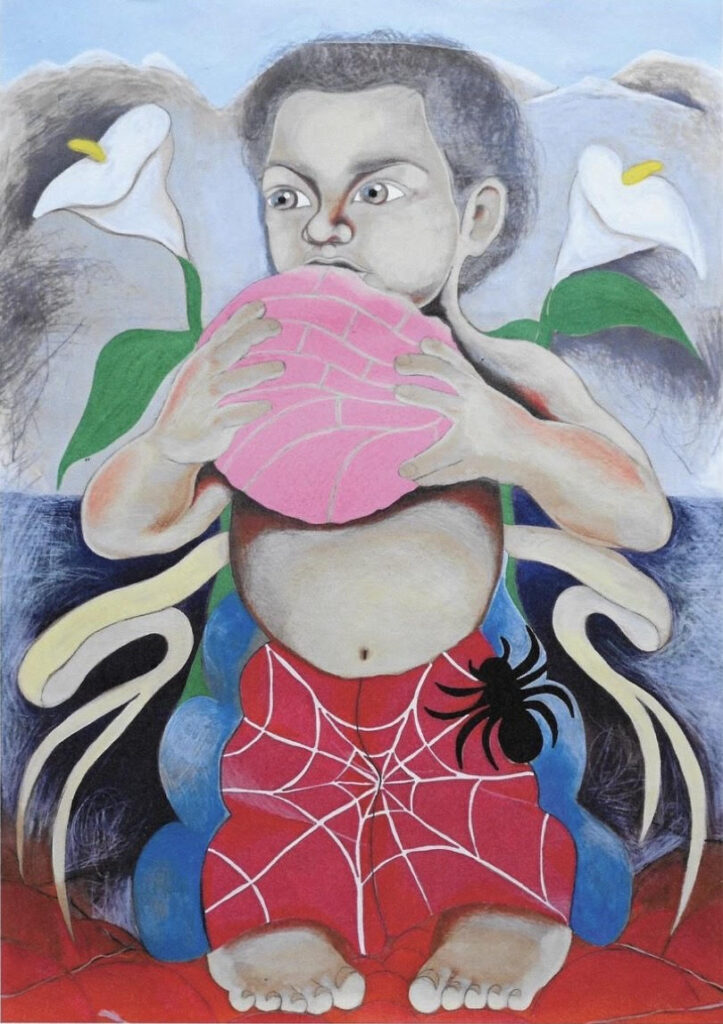
What motivates you?
When choosing an art career, you have to be highly self-motivated. I’m not a full-time artist and never have the privilege of being one. You can not be afraid to fail. I never use the excuse that work takes up too much of my time. I always find time to create after work. I go for it. My purpose for walking this earth is to create art. I am not afraid of death but of leaving this earth without a significant body of work that would be well respected in the art world and keep my family’s name alive.
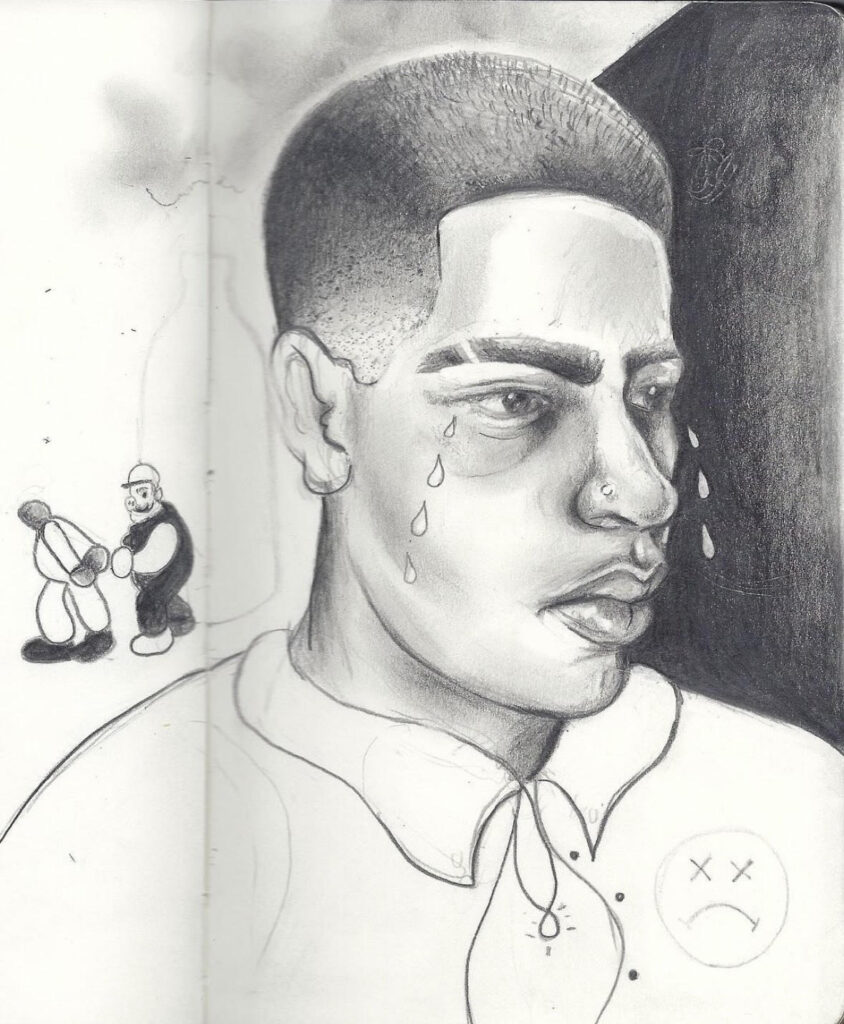
How would you describe a perfect day?
The perfect day for me would be to spend the whole day in my apartment with my girlfriend. I would wake up a little later, around 9 am. Have a cup of coffee and make breakfast. Spend the morning through the afternoon making artwork. Unwind and watch tv shows in the afternoon. Go on a short walk. Play with my cat and finish the day by watching the sunset from our living room window.
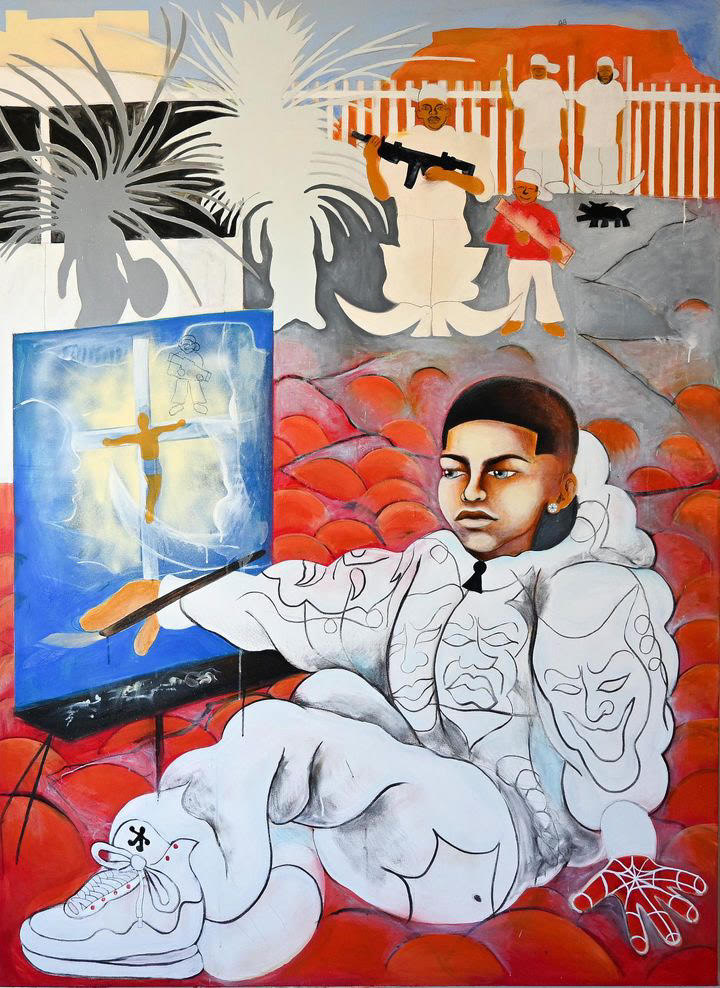
Alright Héctor. I always ask these two questions at the end of an interview. The first is. What’s your favorite movie(s) and why?
My favorite movies are The Super Mario Bros Movie, The Original SpongeBob Movie, and Pixar’s Coco.
I love animation. As a kid, I wanted to work at Pixar’s animation studios. I grew up playing Super Mario Bros and watching Spongebob religiously. Coco was the first time I experienced an animated film that captured Mexican culture so authentically.
The second is. What song(s) are you currently listening to the most right now?
I’ll give you my top three.
“Wake Up” by Terrace Martin
“El Gordo Trae El Mando” by Chino Pacas
“Reborn” by Kanye West and Kid Cudi
